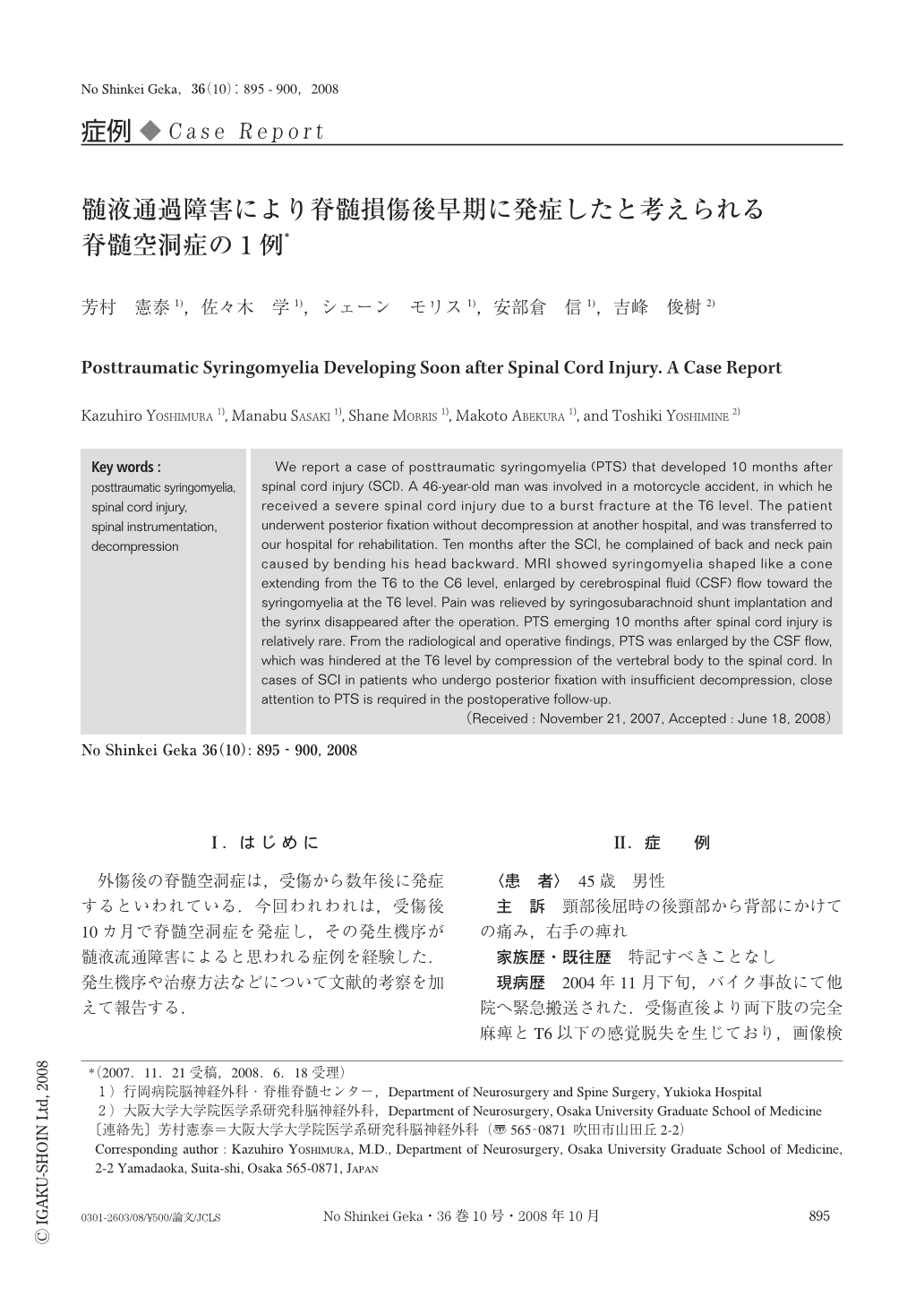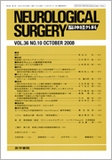Japanese
English
- 有料閲覧
- Abstract 文献概要
- 1ページ目 Look Inside
- 参考文献 Reference
Ⅰ.はじめに
外傷後の脊髄空洞症は,受傷から数年後に発症するといわれている.今回われわれは,受傷後10カ月で脊髄空洞症を発症し,その発生機序が髄液流通障害によると思われる症例を経験した.発生機序や治療方法などについて文献的考察を加えて報告する.
We report a case of posttraumatic syringomyelia (PTS) that developed 10 months after spinal cord injury (SCI). A 46-year-old man was involved in a motorcycle accident, in which he received a severe spinal cord injury due to a burst fracture at the T6 level. The patient underwent posterior fixation without decompression at another hospital, and was transferred to our hospital for rehabilitation. Ten months after the SCI, he complained of back and neck pain caused by bending his head backward. MRI showed syringomyelia shaped like a cone extending from the T6 to the C6 level, enlarged by cerebrospinal fluid (CSF) flow toward the syringomyelia at the T6 level. Pain was relieved by syringosubarachnoid shunt implantation and the syrinx disappeared after the operation. PTS emerging 10 months after spinal cord injury is relatively rare. From the radiological and operative findings, PTS was enlarged by the CSF flow, which was hindered at the T6 level by compression of the vertebral body to the spinal cord. In cases of SCI in patients who undergo posterior fixation with insufficient decompression, close attention to PTS is required in the postoperative follow-up.

Copyright © 2008, Igaku-Shoin Ltd. All rights reserved.


